
Straticyte
Predicting Your Risk of Developing Oral Cancer
Heather discovered an oral lesion.
In this video, Heather reveals what happened next.
Check out more information about the Straticyte test
Know Your Risk Of Developing Oral Cancer
Late diagnosis of oral cancer is a serious issue that leads to potentially severe outcomes. Currently there is only a 50% survival rate and often those who do survive must cope with disfigurement, pain and the inability to talk or eat normally. We believe we can do better.
Introducing Straticyte. Straticyte is a test that accurately predicts a patient’s risk of developing oral cancer. Straticyte identifies precancerous lesions allowing you and your healthcare professional an opportunity to change the outcome.
And right now Straticyte is being offered on a complimentary basis for a limited time.
Ask your healthcare professional for more information about the Straticyte test.
Oral Cancer Statistics
- 70% of oral cancers are diagnosed at late stage
- 50% survival rate after five years
- Kills one person per hour in North America
- Survivors often have a poor quality of life including disfigurement and the inability to eat or drink normally
Risk factors
- Tobacco
- Abuse of alcohol
- Betel quid and areca nut
- HPV
- previous cancer
- Family history of squamous cell carcinoma (SCC)
- Sun exposure
Signs and Symptoms
- white patches, red patches or mixed red and white patches on the lips or in the mouth
- an ulcer or sore in the mouth or on the lip that doesn’t heal
- a lump or growth on the lip or in the mouth, including on the tongue
- thickening in the cheek
- bleeding in the mouth
- pain in the mouth that doesn’t go away
- persistent earache
- loose teeth
- dentures that no longer fit
- slurred speech
- swollen salivary glands
- swollen lymph nodes in the neck
- numbness or loss of sensation over the tongue or lips swelling of the jaw
Oral Lesion Types
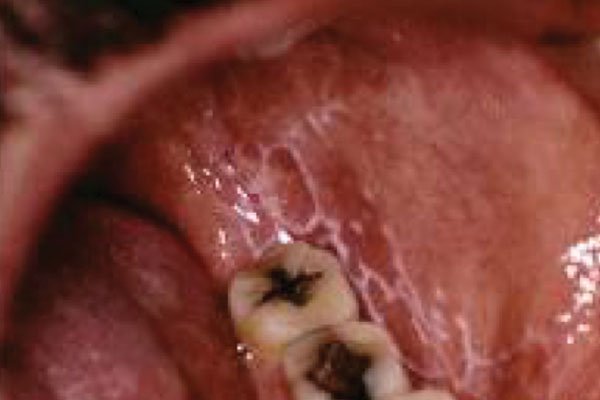
Lichen Planus
- Common disorder
- Multiple presentations
- Less than 2% may become malignant over a 10 year period
- Necessary to distinguish from lichenoid dysplasia

Leukoplakia
- Leukoplakia is white plaque that cannot be scraped off, cannot be given another specific diagnosis and has no known cause (except tobacco use)
- 7 to 15% show dysplasia or a malignant tumor on biopsy
- Varying patterns, granular, wart like, thick, thin
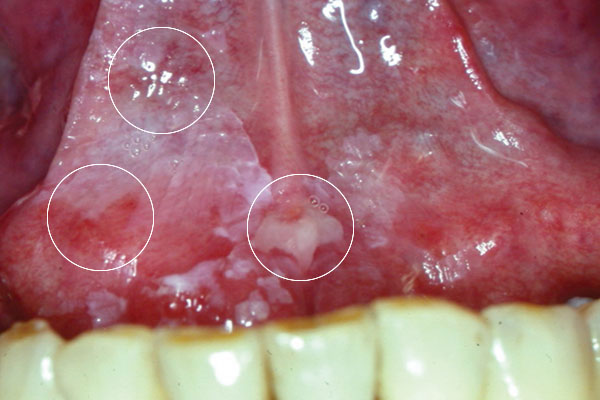
Erythroleukoplakia
- This is an abnormal patch of red and white tissue that forms on mucous membranes in the mouth and may become cancer.
- Tobacco (smoking and chewing) and alcohol may increase the risk of erythroleukoplakia.
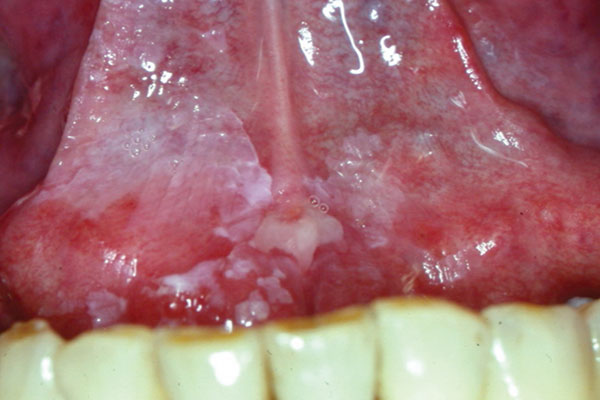
Erythroplakia
- Erythroplakia is defined as a red patch
- These may appear as smooth, velvety, granular or nodular lesions often with a well-defined margins
- The soft palate, the floor of mouth, the undersurface of tongue are the most common sites
- More common among middle aged to elderly persons and, especially among men
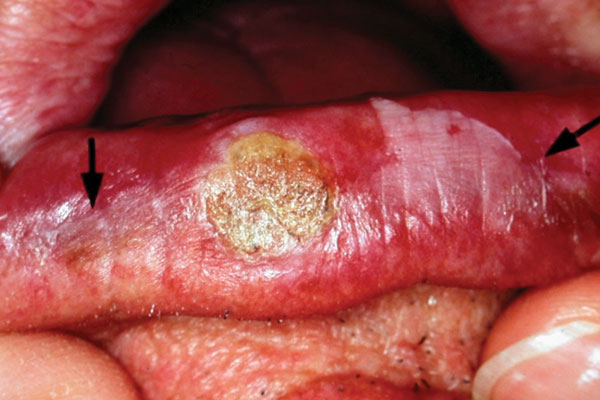
Actinic Cheilitis
- Effect of direct exposure to sunlight over a prolonged period of time
- Found primarily on the lower lip
- Common in outdoor workers, sun worshippers
- Deceptively benign in appearance, both clinically and histologically
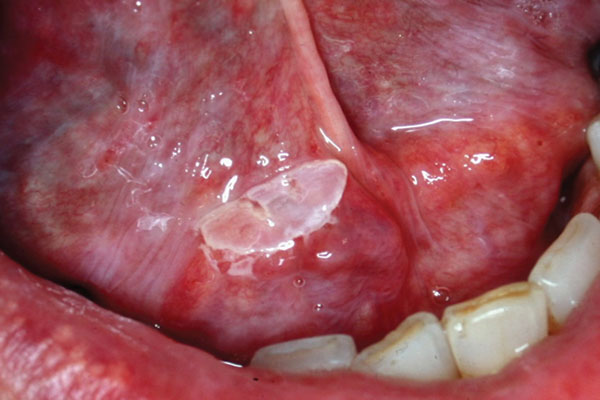
Sublingual Keratosis
- Uncommon form of “leukoplakia”
- Thick white patch on the undersurface of the tongue or floor of mouth
- Initial biopsy is often benign
- High incidence of cancer
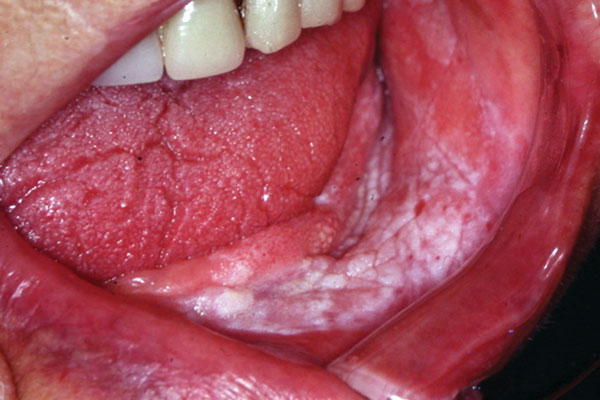
Proliferative Verrucous Leukoplakia (PVL)
- PVL is an uncommon form of progressive multifocal leukoplakia and has a high rate of malignant transformation to either squamous cell cancer or verrucous carcinoma
- PVL has a high probability of recurrence.
- More often seen in females
- Age range is 20-80
- Lining of the cheeks, floor of the mouth and tongue are often most affected
- 70% of patients will develop a cancer within a decade following diagnosis
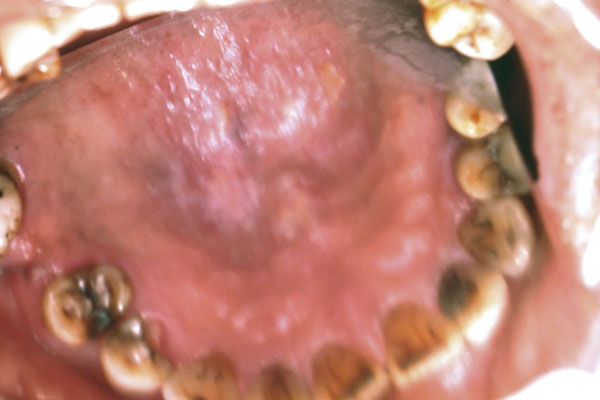
Stomatitis in Reverse Smokers
- This is caused by extreme heat and tobacco in the mouth, most commonly from inserting the lit end in the mouth
- This is a common practice in parts of India, South America and the Philippines
- Older women are most often affected
- Differs from nicotinic stomatitis
- Accounts for 50% of malignancies in some parts of the world
“Straticyte has the potential to significantly change outcomes for patients by providing more relevant information about dysplastic oral lesions. Currently, there is a gap in predictive tools for healthcare professionals.”
“Oral Maxillofacial, ENT Surgeons and Oral Pathologists have confirmed a gap in diagnosis and are searching for something that will improve their patient’s outcomes. They see the devastation that happens with a late diagnosis of oral cancer. They want and need new technology that predicts a patient’s progression to oral cancer.”
Recent Blog Posts
Understanding Oral Epithelial Dysplasia and Its Link to Oral Cancer
Oral squamous cell carcinoma (OSCC) is a type of mouth cancer that affects over 450,000 people worldwide each year, with around half of the cases leading to death within five years. While common risk factors for OSCC include smoking, alcohol use, and the chewing of...









